1. Technology as boon (aid) to students
1.1. Information is made more accessible
1.1.1. Example: MIT uploaded all their learning resources online for students from all over the world to access and download.
1.1.2. Example: e-learning is now conducted periodically in schools in Singapore so as to prepare students in the case of an epidemic outbreak. During the H1N1 and Sars period, schools were closed which disrupted the curriculum. Thus e-learning has helped to ensure that students will still be able to learn without coming to school with learning resources uploaded online.
1.2. Uses of websites such as Twitter to aid learning
1.2.1. Example: Ngee Ann Secondary School in Singapore uses the popular social website Twitter to help students improve their summary.
1.3. Creation of messenger and online bots to help students answer questions should the teacher not be available.
1.3.1. Example: Some schools in Singapore including Ngee Ann Secondary School pose their questions of a particular subject to a computer bot, an automated program which answers their questions
1.4. The internet has revolutionized learning such that learning is not purely confined to the classroom
1.4.1. Example: Availability of search engines such as Google and Yahoo enable students to access a gargantuan volume of information and learn more about a subject that is usually limited by the information provided by the textbook and the teacher.
1.4.2. Example: In the past, students are only exposed to the mundane and monotonous textbook. In the 21st century, schools are using video clips, PowerPoint and programmes such as Flash to enrich students' learning experiences. Students have given feedback that they learn better when they are allowed to watch the Youtube videos that their teachers upload to learn about a concept and as well as learning at their own pace.
1.5. Uses of the digital books to replace the conventional textbooks
1.5.1. Example: Some schools in US are using the popular e-reader by Amazon, Kindle, to replace the conventional textbooks as it can help to reduce their weight load (instead of carrying stacks of textbooks around), cut costs and save trees (producing paper).
2. Technology as bane to students (how technology has not aided learning in school)
2.1. Students' learning will depend on the stability of digital technology. Current technology is still relatively unstable with unpredictable glitches and system crashes for no apparent reasons. Furthermore, computers are regularly infected with viruses nowadays.
2.1.1. Example: The earthquakes in Taiwan which occurred in 2006 disrupted internet services in Asia.
2.2. The emergence of social networking sites such as Facebook and Twitter have led to decreased productivity of students.
2.2.1. More and more students are hooked onto Facebook and Twitter. As a result, students could be spending more time on such websites instead of actually learning independently without the guidance and supervision of a teacher. *Such cases usually happen with e-learning.
2.3. The validity of the information and facts offered on the internet could result in students learning the incorrect information and facts on a subject.
2.3.1. Example: A test conducted in a school in US has shown that 80% of the students could not differentiate whether the website was legitimate. This reflects the fact that without the guidance and supervision of a qualified personnel such as a teacher, students could be led to believe the false information provided on the internet.
2.3.2. Example: The popular online encyclopedia "Wikipedia" allows internet users to change and edit information about a particular subject. Unsuspecting students may be manipulated by internet users who post incorrect information on the particular page. They could be led to believe the false information posted on the webpage.
